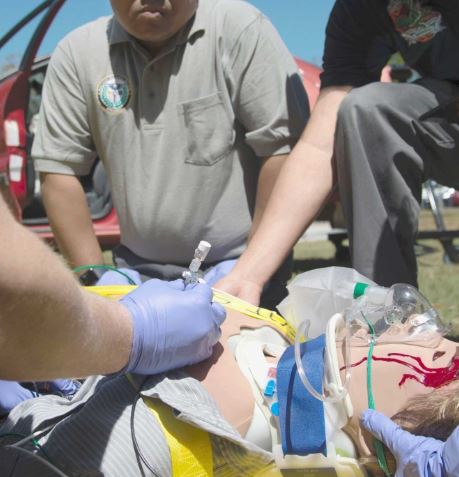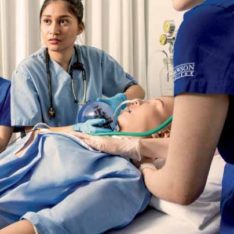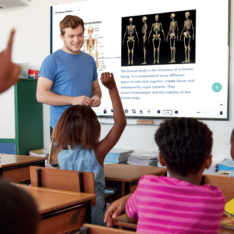Ares combines the streamlined simplicity of an emergency care manikin with CAE’s unrivaled modeled patient physiology, offering an entirely new training experience for prehospital and emergency care providers. With CAE’s unique SymEyes, two-way communication and just the right blend of clinical training features, CAE Ares is durable and reliable through repeated lifesaving team scenarios. Ares was created to fulfill the requirements for advanced life support training (ACLS) and emergency care management. Backed by CAE’s dedicated customer service team and Academy of expert educators, Ares embodies the exceptional quality and support you expect from CAE. Ares demonstrates spontaneous breathing with bilateral chest rise and fall, offering better realism for life-saving learning.
Ares
CAE Ares is CAE Healthcare’s newest mid-fidelity manikin, designed to fulfill the requirements for Advanced Life Support (ALS), Advanced Cardiac Life Support (ACLS) and emergency care team training within academic programs, hospitals, and emergency care services. Ares is portable, lightweight and durable, with the right mix of features for life-saving simulation training.
Neuro
• Tristate pupils
• SymEyes (optional)
Articulation
• Realistic articulation
• Range of motion in hips, knees, ankles,
shoulders
• Cervical motion for practice of patient
stabilization
Airway
• Bag-valve-mask (BVM) ventilation
• Orotracheal and nasotracheal intubation
• Placement of various airway adjuncts
• Endotracheal tube intubation
• Retrograde and Fiberoptic intubation
• Transtracheal jet ventilation
• Needle and surgical cricothyrotomy
• Tracheostomy
• Right main stem intubation with detection
• Stomach distention with esophageal
intubation
• Laryngospasm (manual)
Breathing
• Spontaneous breathing
• Bilateral and unilateral chest rise and fall
• Lung auscultation sites on anterior chest
• Upper airway sounds: stridor and gurgling
• Bilateral needle decompression
Cardiac
• 4-lead ECG monitoring with real
equipment
• 12-lead dynamic ECG display
• Defibrillation, cardioversion and pacing
using live equipment via external defib
box (optional)
Circulation
• Unilateral blood pressure measurement
by auscultation and palpation
• Bilateral carotid and femoral pulses
• Unilateral radial and brachial pulses
• Variable pulse strength
CPR
• Compliant with 2015 AHA guidelines and
ERC guidelines
• CPR compressions generate palpable
pulse, blood pressure, waveform and
ECG artifacts
• Realistic chest compression depth
and resistance
• Software metrics detects hand placement,
rate and depth of compressions, recoil,
ventilations and ventilation:
compression ratio
IM Medication Administration
• Three intramuscular sites
Urinary
• Urinary catheterization without fluids
• Interchangeable genitalia
Vascular Access
• Unilateral IV cannulation at antecubital
and dorsum of hand
• Blood draw with vacuum sealed blood
collection system
• Unilateral (humoral) IO access
• Ultrasound training module insert for
IV cannulation (optional)
Sounds
• Auscultation of normal and abnormal
heart, lung and bowel sounds with the
new StethoSym technology utilizing
radio-frequency identification (RFID) tags
• Prerecorded speech and vocal sounds
• Bidirectional audio communication
between manikin and operator
Standard Equipment
CAE Ares wireless and tetherless manikin:
Medium and dark skin tone available
Male and female gender configuration
One wireless StethoSym
Samsung Galaxy S3 tablet
New software platform CAE Maestro
One CAE Maestro standalone license
One license for Ares Learning Experience
mobile app with educational content
focused on the six Simulated Clinical
Experiences including:
– Pre- and post-test questions
– Study cards on pathophysiology,
assessment, management and
clinical pearls
Includes 6 CAE Simulated Clinical
Experiences (SCEs)
– Cardiopulmonary Arrest
– Closed Head Injury and Pneumothorax
– Heroin Overdose
– Inferior-Posterior Myocardial Infarction
– Sepsis with Hypotension
– Stroke




